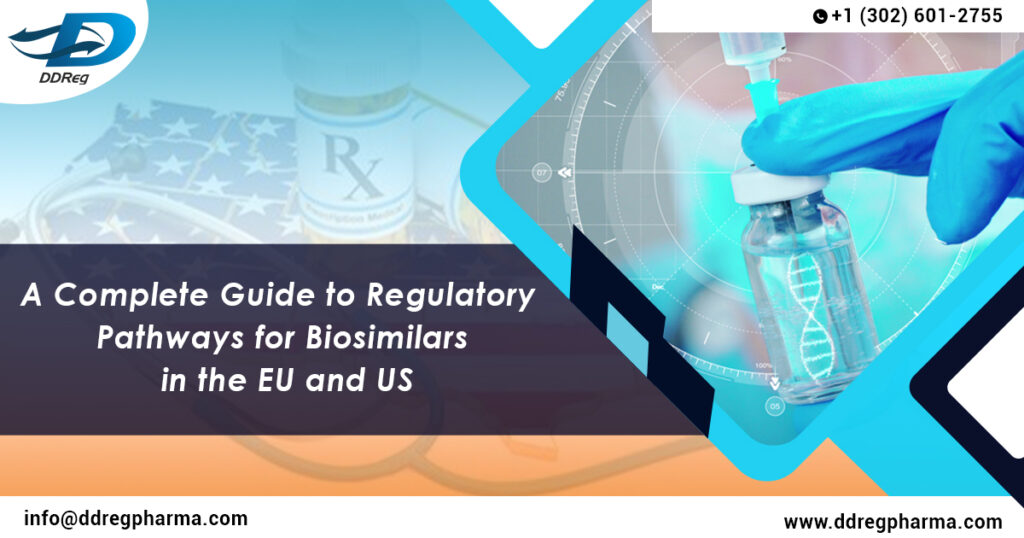In the dynamic world of pharmaceuticals, biosimilars are reshaping treatment paradigms, offering cost-effective alternatives to biologic therapies while maintaining high-quality standards. The successful development and commercialization of biosimilars hinge on navigating complex regulatory pathways. This guide provides an in-depth look into the regulatory frameworks governing biosimilars in the European Union (EU) and the United States (US), equipping pharmaceutical manufacturers with the knowledge to accelerate their journey to market.
Understanding Biosimilars
Biosimilars are biologic products highly similar to an already approved reference product, with no clinically meaningful differences in safety, purity, or potency. Unlike generic drugs, biosimilars involve intricate manufacturing processes due to the complexity of their molecular structures and the living systems used in their production.
Given their potential to reduce healthcare costs and increase patient access, regulatory authorities in the EU and US have established specific pathways to ensure the safety, efficacy, and quality of these products.
The EU Regulatory Pathway for Biosimilars
The EU has been a pioneer in biosimilar regulation, introducing the first guidelines in 2005. Here’s a step-by-step overview of the process:
- Centralized Approval Process
In the EU, biosimilars must follow the centralized procedure managed by the European Medicines Agency (EMA). This process ensures a single marketing authorization, valid across all EU member states, Iceland, Norway, and Liechtenstein.
- Legal Framework
Biosimilars in the EU are regulated under Directive 2001/83/EC and Regulation (EC) No 726/2004. These laws establish stringent requirements for quality, safety, and efficacy.
- Scientific Guidelines
EMA’s guidelines provide detailed expectations for biosimilar development, covering:
- Comparability Studies: Demonstrate similarity to the reference product in terms of structure, function, and clinical performance.
- Clinical Trials: Focused trials for pharmacokinetics, pharmacodynamics, and immunogenicity are essential to establish biosimilarity.
- Marketing Authorization Application (MAA)
Manufacturers must submit an MAA to the EMA, including:
- Analytical data comparing biosimilar and reference product.
- Clinical and non-clinical study results.
- Risk Management Plan (RMP).
- Post-Approval Commitments
Ongoing pharmacovigilance and periodic safety updates (PSURs) are mandatory to monitor the product’s long-term safety.
The US Regulatory Pathway for Biosimilars
The US biosimilar framework, governed by the Biologics Price Competition and Innovation Act (BPCIA) of 2009, came into effect in 2010. Here’s an outline of the key elements:
- 351(k) Pathway
The US Food and Drug Administration (FDA) oversees biosimilar approval through the 351(k) application process under the Public Health Service Act (PHSA).
- Interchangeability Designation
Unlike the EU, the US regulatory framework includes the concept of interchangeability, which allows pharmacists to substitute a biosimilar for its reference product without prescriber intervention. Achieving this designation requires additional clinical evidence.
- Key Requirements
To obtain FDA approval, manufacturers must:
- Conduct analytical, preclinical, and clinical studies to demonstrate biosimilarity.
- Provide evidence of no clinically meaningful differences from the reference product.
- Develop a robust pharmacovigilance plan.
- Exclusivity Periods
The reference biologic product in the US enjoys 12 years of exclusivity from the date of first licensure. Biosimilars can only be approved after a 4-year data exclusivity period.
- FDA Guidance Documents
The FDA issues detailed guidance documents for industry stakeholders, focusing on scientific and regulatory expectations, including interchangeability, labeling, and post-marketing requirements.
Key Differences Between the EU and US Pathways
Aspect | EU | US |
Regulatory Authority | EMA | FDA |
Approval Pathway | Centralized Procedure | 351(k) Pathway |
Interchangeability | Not applicable | Requires additional evidence |
Exclusivity Period | 10 years (reference product) | 12 years (reference product) |
Clinical Trial Emphasis | Comparative efficacy and safety | Robust analytical and clinical studies |
Challenges and Opportunities
Navigating biosimilar pathways is complex, involving scientific, regulatory, and operational challenges. However, the rewards are substantial:
- Cost Savings: Biosimilars offer an estimated 20-30% reduction in treatment costs.
- Market Access: Robust regulatory strategies enable timely access to growing biosimilar markets in the EU and US.
- Innovation: The evolving regulatory landscape encourages innovation in biosimilar manufacturing and development.
Conclusion
Understanding and navigating the regulatory pathways for biosimilars in the EU and US is crucial for success in this competitive sector. At DDReg, we specialize in providing end-to-end regulatory support, from dossier preparation to post-marketing compliance, ensuring your biosimilar meets global standards.
Are you ready to take your biosimilar to market? Partner with us to unlock the potential of your biologic innovations. Contact us today to explore how we can support your regulatory journey and drive success in the biosimilar landscape!
Read more from us here: Pharmaceutical Regulatory Trends and Challenges Across the Asia-Pacific Region

